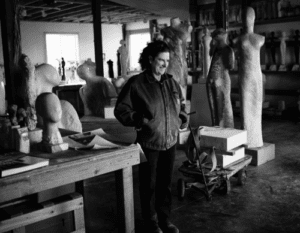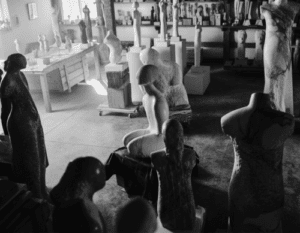About
My passion for art began in childhood. From an early age, I immersed myself in books and visited museums, captivated by sculptures and artifacts dating back to the Paleolithic period. I was also drawn to collections of African art and indigenous cultures of the Americas. I began to see that the sculptor had an essential role, reflecting the beliefs, mythologies and values of their societies.
I am inspired by prehistoric artifacts, and the sculpture of the Etruscan, Gothic, Renaissance, modern and contemporary sculptors whose figurative works are in collections or studios where I have visited while working in Italy for over three decades.
Central to my practice is an exploration of the feminine divine, expressed as the goddess archetype in mythologies, cultures, and religions. Carl Jung observed, “She is not a symbol of something; she is something; she is life.” This creative force represents the essence of creation itself—the giver of life, the vessel through which all existence flows. Once exalted, this archetype was later suppressed. Yet in recent decades, a renewed understanding of the feminine divine has rekindled the exploration of its significance as a vital part of the human experience.
At the intersection of the spiritual self and the physical body lies the energy of the feminine divine, encompassing qualities such as birth, compassion, nurturing, and intuitive wisdom—qualities that transcend gender and exist within each of us. These energies flow naturally into my artistic process, as I become a vessel for transformation, shaping raw materials of the earth into forms that honor the interplay between the earthly and the ethereal.
My practice is one of devotion and ritual. Using subtractive methods of carving marble, molding clay, and casting bronze I create sculptures that speak to our shared connection with this sacred energy. Each piece is an offering, inviting viewers to explore their inner harmony through timeless archetypes.
Through this process, I have come to intimately know the feminine divine within myself. Releasing a finished piece into the world is both an act of reverence and my contribution to society—an invitation to reconnect with the eternal flow of creation and to rediscover the sacred within ourselves.



